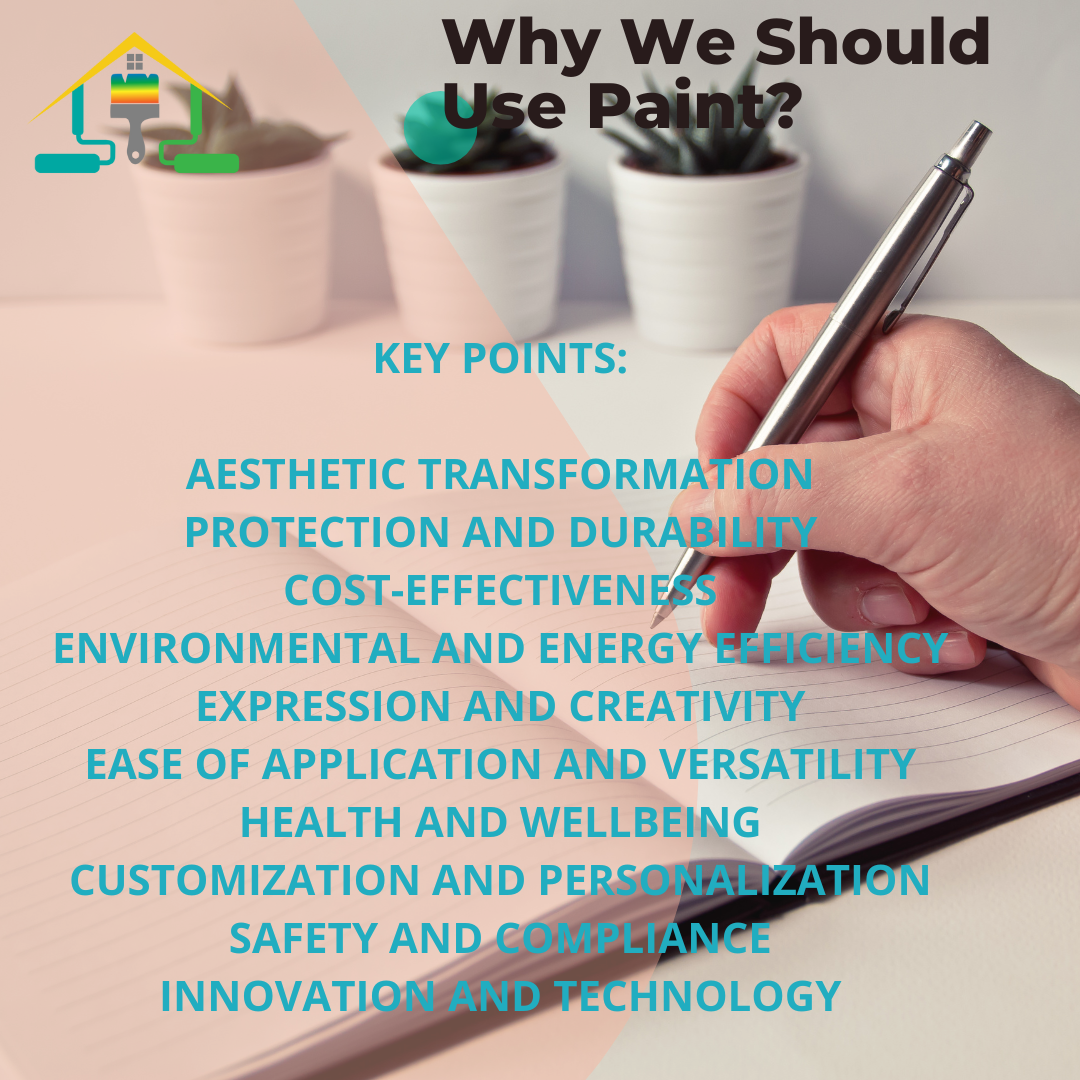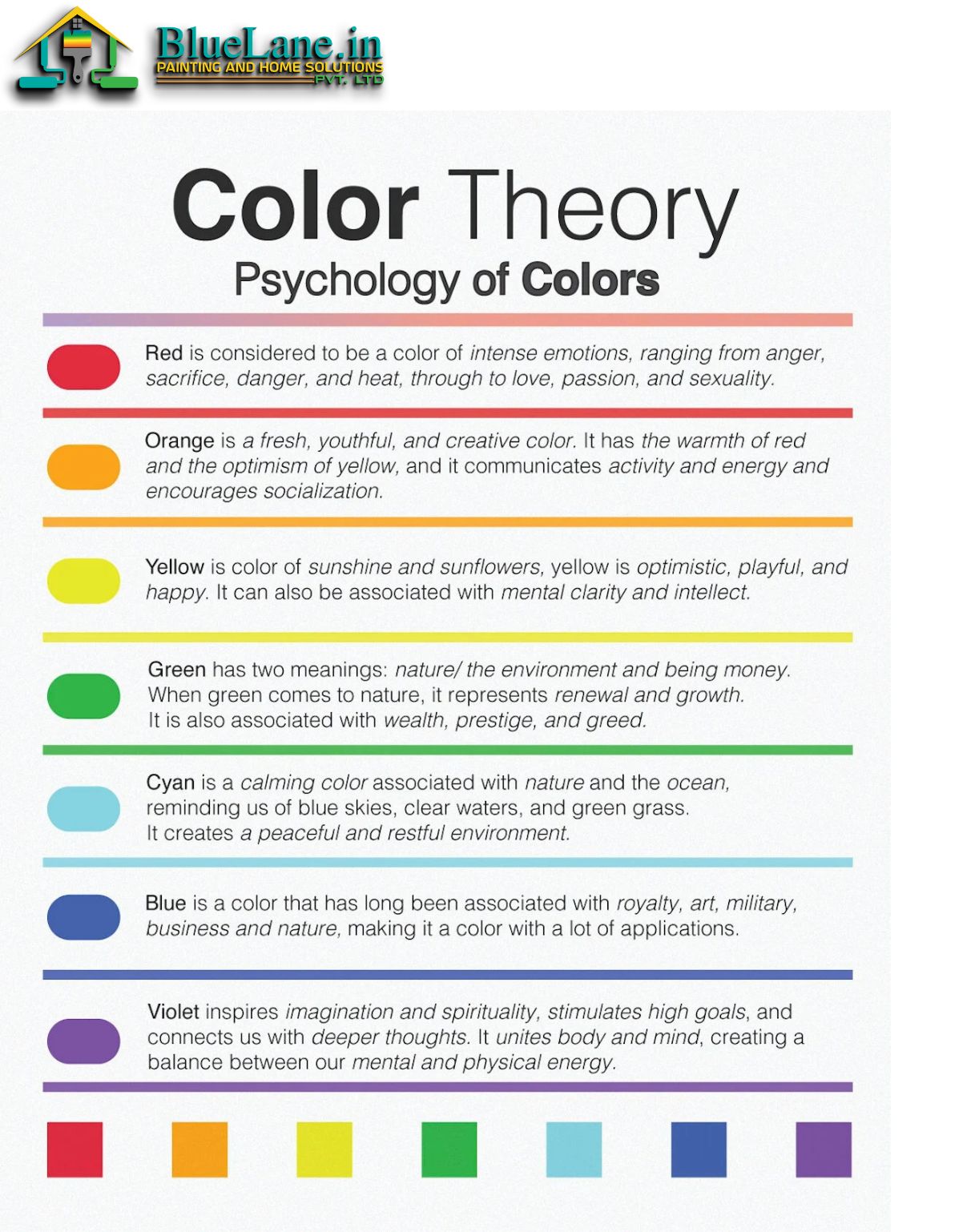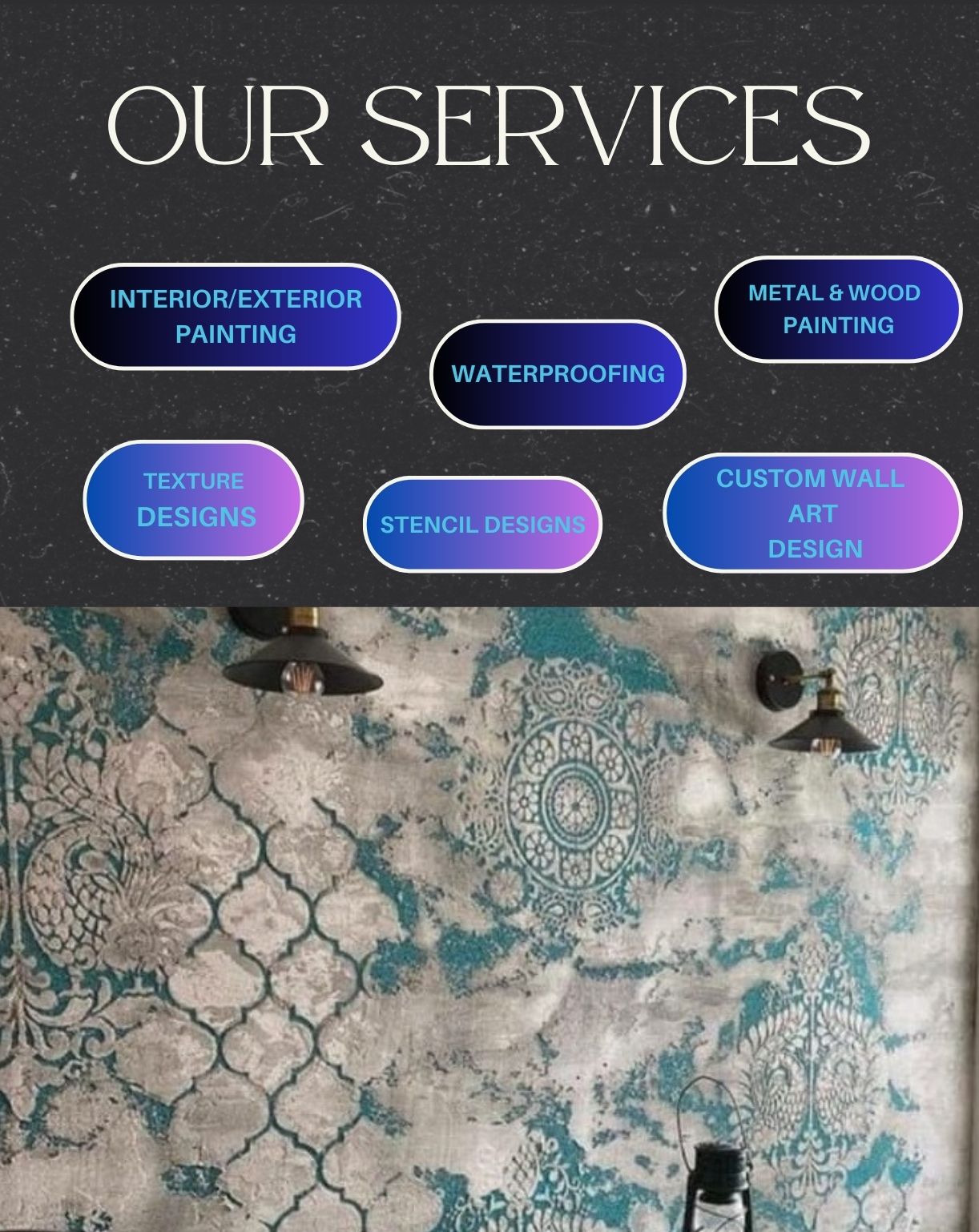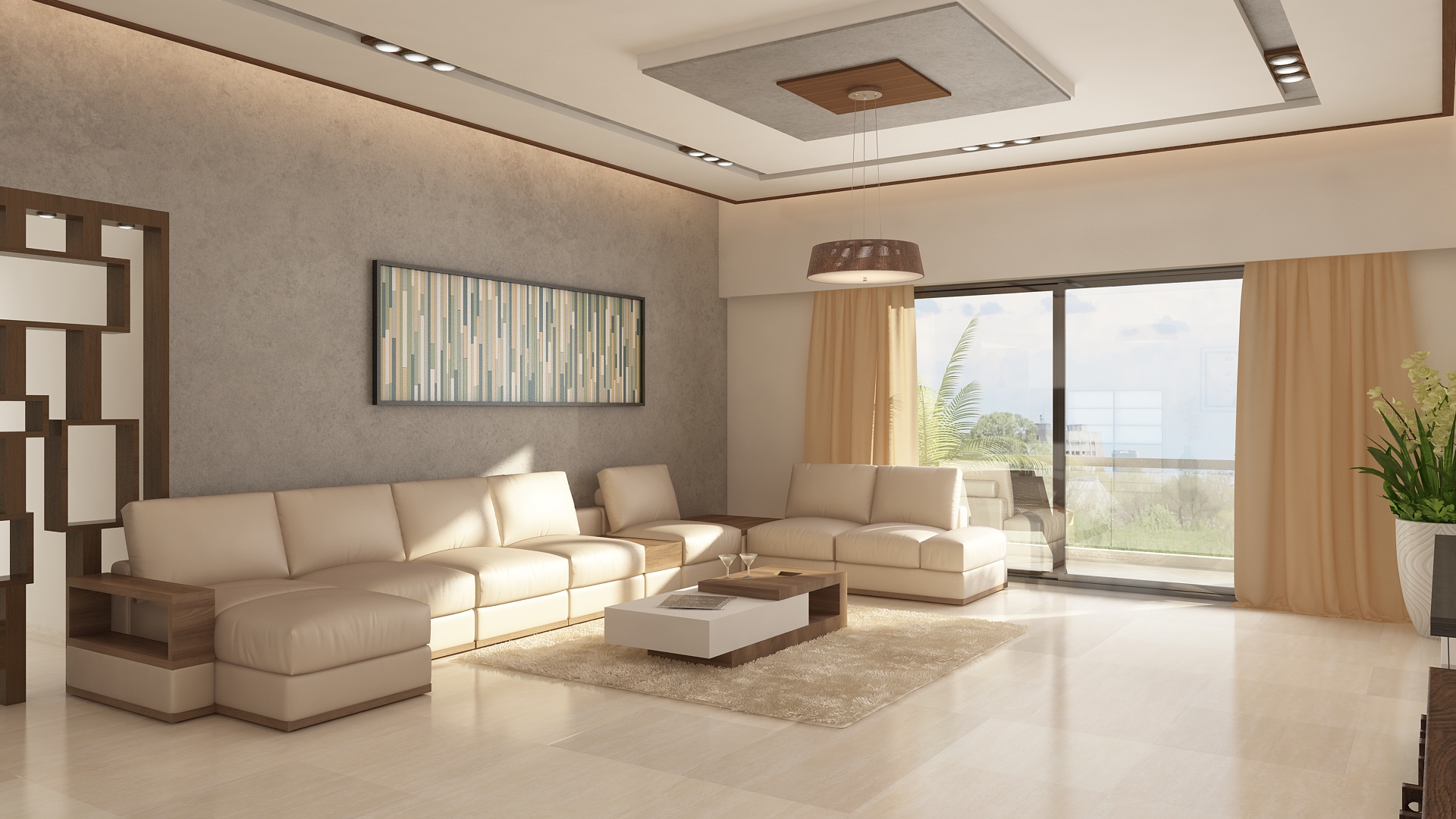
Why we should use Paint?
Using paint as a medium offers unique benefits across various applications, including home improvement, artistic expression, and industrial use. Here’s an exploration of why we should use paint, from its functional advantages to its transformative power in different contexts.
1. Aesthetic Transformation
One of the most compelling reasons to use paint is its power to transform spaces and objects aesthetically. Whether applied on walls, furniture, or industrial materials, paint allows you to change the color, texture, and overall mood of an environment. For example, in interior design, paint can make a room feel larger, cozier, or brighter, depending on the colors chosen. A dark, enclosed space can be turned into an inviting and expansive area by simply applying a light, reflective color.
Beyond residential applications, industries also use paint to improve the visual appeal of their products. Automotive, electronics, and consumer goods manufacturers invest significantly in painting processes to make their products attractive to consumers. The right finish, whether glossy, matte, or metallic, can make a product stand out.
2. Protection and Durability
Paint serves a critical protective function, especially in industrial and architectural applications. Metal, wood, and other materials are susceptible to damage from environmental factors like moisture, UV radiation, and chemical exposure. Paint creates a protective barrier that shields these materials from rust, corrosion, and decay. For instance, automobiles are coated with several layers of paint to ensure that the metal beneath is safeguarded from the elements, extending the vehicle’s life.
Similarly, wooden surfaces exposed to the outdoors, such as decks and fences, benefit from paint’s weather-resistant properties. This not only prolongs the lifespan of the wood but also maintains its aesthetic appeal, preventing issues like rotting or splintering.
3. Cost-Effectiveness
Painting is often one of the most cost-effective methods for renovation or maintenance. Repainting a space is far less expensive than replacing fixtures or renovating walls and furniture entirely. This makes paint a go-to solution for those looking to update their homes or workplaces without significant financial investment. The versatility of paint means that it can be used on various surfaces, from drywall and plaster to concrete, making it an accessible tool for enhancing any environment.
For manufacturers, paint can be a relatively low-cost way to enhance products without increasing production complexity. A well-painted product may fetch a higher price in the market simply because of its aesthetic appeal, contributing to better margins.
4. Environmental and Energy Efficiency
In today’s world, energy efficiency and environmental sustainability are growing concerns, and paint can play a role in addressing these challenges. Specially formulated paints, like heat-reflective or insulating varieties, can help reduce energy consumption in buildings. Reflective paints, for example, can be applied to roofs to reflect solar radiation, reducing the need for air conditioning and thereby lowering energy costs.
Eco-friendly paints, such as low-VOC (volatile organic compound) options, are increasingly being used to minimize harmful emissions. Traditional paints often release VOCs into the atmosphere, contributing to air pollution and health hazards. The development of water-based paints has reduced these impacts, making it possible to use paint while also protecting indoor air quality.
5. Expression and Creativity
Paint has long been a medium for personal and artistic expression. From prehistoric cave paintings to modern art movements, humans have used paint to convey emotions, tell stories, and create visual beauty. The versatility of paint allows artists to work in various styles, from realistic portraits to abstract compositions, making it one of the most adaptable forms of artistic expression.
In interior design, the choice of paint color can reflect the personality and preferences of the occupants. Bold, bright colors might suggest energy and creativity, while soft, neutral tones can create a calm and serene atmosphere. The ability to mix and create custom colors also gives individuals the freedom to craft unique spaces that resonate with their personal tastes.
6. Ease of Application and Versatility
Paint is one of the easiest materials to apply. Whether you are an experienced professional or a DIY enthusiast, painting does not require specialized tools or techniques, making it accessible to everyone. With basic tools like brushes, rollers, and spray equipment, anyone can apply paint to transform an object or space.
The versatility of paint extends beyond walls. It can be used on various materials like wood, metal, fabric, plastic, and even glass. Each surface may require different types of paint and preparation, but the fact remains that paint can adapt to virtually any medium. This versatility makes paint an essential tool in many industries, from construction and automotive to fashion and décor.
7. Health and Wellbeing
Colors, which are applied through paint, have been shown to have a significant impact on mental health and wellbeing. Psychologists have long studied the influence of color on mood and behavior, and paint provides a practical way to leverage these effects. For instance, hospitals and healthcare facilities often use calming shades of blue and green to promote healing and relaxation.
Similarly, in educational settings, stimulating colors like yellow and orange can boost energy and creativity, while softer tones may help maintain focus and calm. In homes, personal spaces like bedrooms and living rooms can be painted to reflect the desired emotional tone, contributing to a sense of comfort and well-being.
8. Customization and Personalization
Paint offers endless possibilities for customization. Whether you're creating a unique piece of art or personalizing a piece of furniture, the ability to choose your colors and finishes means you can tailor the outcome to fit your specific vision. From murals and stenciling to faux finishes like marble or wood grain, paint allows for creative experimentation.
This customization isn’t limited to artistic projects—homeowners and businesses alike use paint to differentiate their spaces. In the business world, brand identity can be communicated through the colors used in office spaces or storefronts, helping to establish a recognizable presence. The psychology of color plays an important role in how customers perceive and interact with a brand.
9. Safety and Compliance
In many industrial settings, paint is not just about aesthetics—it plays a vital role in safety and regulatory compliance. For example, safety lines and hazard warnings are often painted on floors, walls, or equipment to ensure the safety of workers. Reflective paints are used on roads and vehicles to improve visibility, particularly in low-light conditions. Paint can also be used to label pipes or machinery in accordance with industry regulations, ensuring that the correct procedures are followed.
Specialized paints are developed to meet fire-retardant standards, ensuring that materials and structures are resistant to heat and flames. This is crucial in industries such as construction, where fire safety is a paramount concern.
10. Innovation and Technology
The paint industry continues to evolve, with new innovations being developed to meet modern needs. Nano-coatings, for example, offer self-cleaning properties or enhanced durability. Smart paints can detect changes in temperature, humidity, or other environmental factors, alerting users to potential issues before they become serious problems.
Antimicrobial paints are another innovation, designed to reduce the spread of germs and bacteria on surfaces. These paints are increasingly used in hospitals, schools, and public spaces where hygiene is critical.
In conclusion, the use of paint extends far beyond its aesthetic appeal. It offers protection, customization, cost-effectiveness, and even health benefits. Whether in the context of home improvement, industrial applications, or artistic expression, paint is a powerful and versatile tool that continues to play a vital role in our daily lives.









